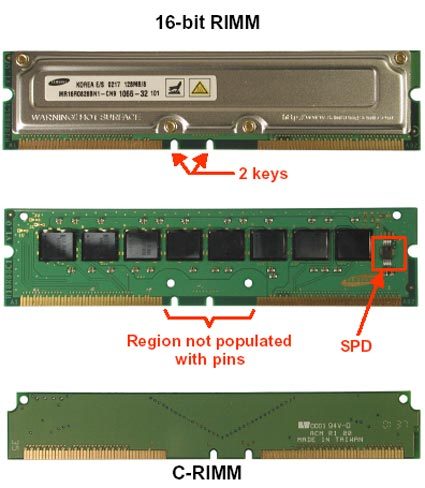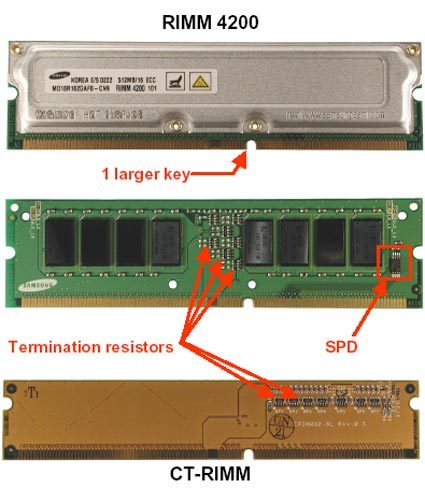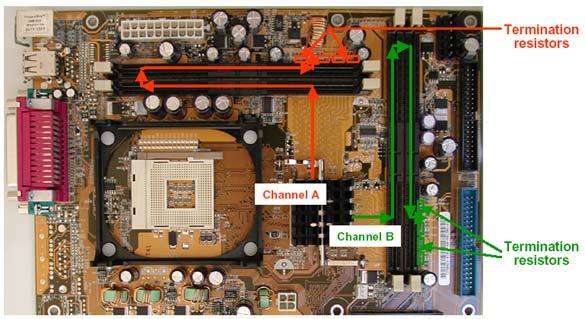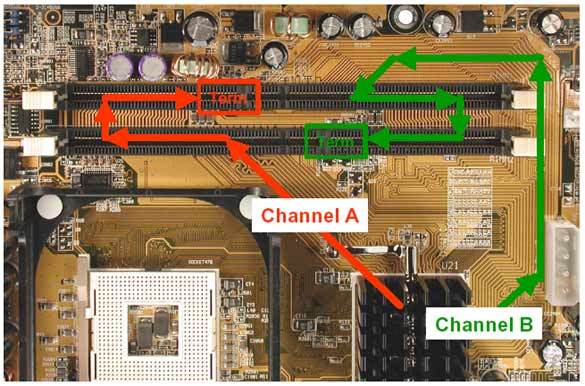Warp Speed with Rambus: Six Boards for PC1066
Rambus Technology: 16 Bit Vs. 32 Bit
There's no end to the confusion: Rambus has introduced RIMM 4200, a marketing label that has nothing behind it but the bandwidth of PC1066 memory. To be exact, the bandwidth of the new 32 bit module is 4.2 GB/s. Dual-channel operation, as with the 16 bit modules, is no longer required. Basically, the new 32 bit technology is the fusion of two modules to form a single module. An advantage in speed is therefore not the point.
The following illustrations show how the signals are transmitted with the two Rambus technologies. With the 16 bit interface, the terminators are positioned at the end of the bus on the motherboard. With the 32 bit version, however, the same terminators are on the memory module. The result of this is that the motherboard manufacturer saves on the cost for one channel, since the resistors are positioned on the C-RIMM of the second channel.
Signalling and terminators with the 16 bit Rambus interface.
Signalling and terminators with the 32 bit Rambus interface.
Get Tom's Hardware's best news and in-depth reviews, straight to your inbox.
Current page: Rambus Technology: 16 Bit Vs. 32 Bit
Prev Page A Comeback For Rambus? Six Boards With Intel 850E, Continued Next Page Rambus Technology: 16 Bit Vs. 32 Bit, Continued


